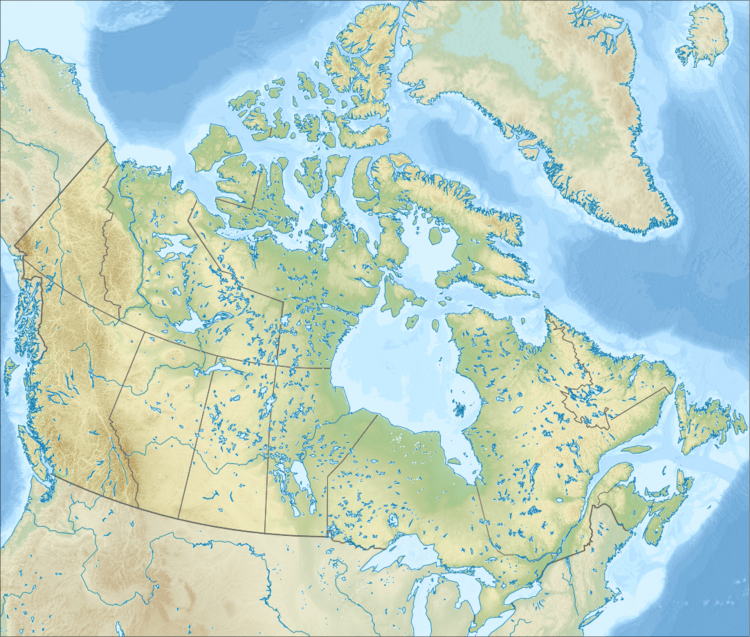Vanguard Formation
The Vanguard Formation is a stratigraphical unit of Callovian to Oxfordian age in the Western Canadian Sedimentary Basin.
| Vanguard Formation Stratigraphic range: Callovian to Oxfordian | |
|---|---|
| Type | Geological formation |
| Sub-units | Masefield Shale Roseray Formation Rush Lake Shale |
| Underlies | Mannville Group |
| Overlies | Shaunavon Formation |
| Thickness | up to 180 metres (590 ft)[1] |
| Lithology | |
| Primary | Shale, sandstone |
| Location | |
| Coordinates | 49.36°N 107.79°W |
| Region | WCSB, Williston Basin |
| Country | |
| Type section | |
| Named for | Vanguard, Saskatchewan |
| Named by | Milner & Thomas |
| Year defined | 1954 |
 Vanguard Formation (Canada) | |
It takes the name from Vanguard, and was first defined by R.L. Milner and G.E. Thomas in 1954.[2]
Lithology
The Vanguard Formation is composed of calcareous shale with a median quartzose sandstone. [1]
Distribution
The Vanguard Formation Lateral reaches a maximum thickness of 180 metres (590 ft) in the Williston Basin along the Saskatchewan/Montana border.[1]
Relationship to other units
The Vanguard Formation is unconformably overlain by the Mannville Group and disconformably overlays the Shaunavon Formation.[1]
It is equivalent to the Ellis Group in Montana and North Dakota.
Subdivisions
In south-western Saskatchewan, Vanguard has group status, and includes the following subdivisions (of formation rank):
- Masefield Shale: calcareous shale
- Roseray Formation: quartzose glauconitic sandstone
- Rush Lake Shale: calcareous shale with Gryphaea and Kepplerites ammonite fossils
References
- Lexicon of Canadian Geologic Units. "Vanguard Formation". Retrieved 2010-01-01.
- Milner, R.L. and Thomas, G E., 1954. Jurassic System in Saskatchewan. In: Western Canada Sedimentary Basin. American Association of Petroleum Geologists, p. 250-267